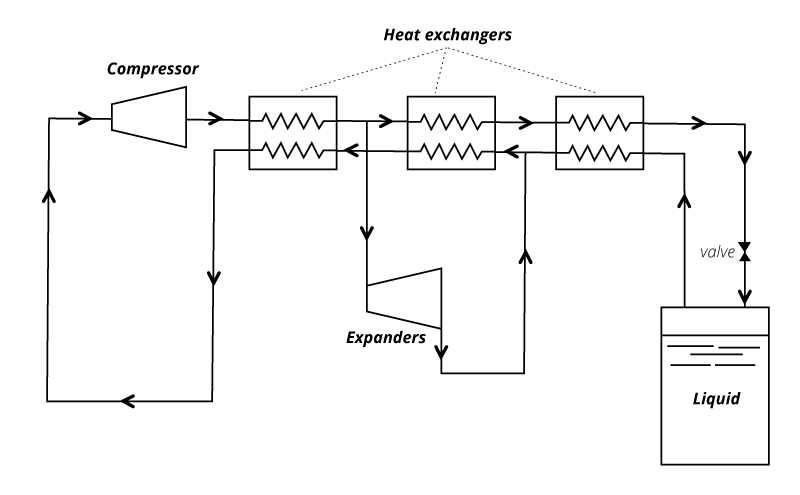For hydrogen to be liquefied, it must be cooled to an extremely low temperature, approximately -255°C.

Claude cycle
One of the most efficient ways to do this is to use a liquefaction technique inspired by the Claude process (initially invented in 1902 to liquefy air).
The process consists of precooling the hydrogen in a nitrogen loop, then subjecting it to quasi-isentropic expansion in an expansion turbine.
Cryostar has more than 30 years’ experience building this type of turbine, designed for use with hydrogen concentrations of more than 95%.
The energy extracted by the turbine can be used to power a compressor (thus contributing to the compression power required by the cycle) or a generator (making it possible to recover electric power from the process).
